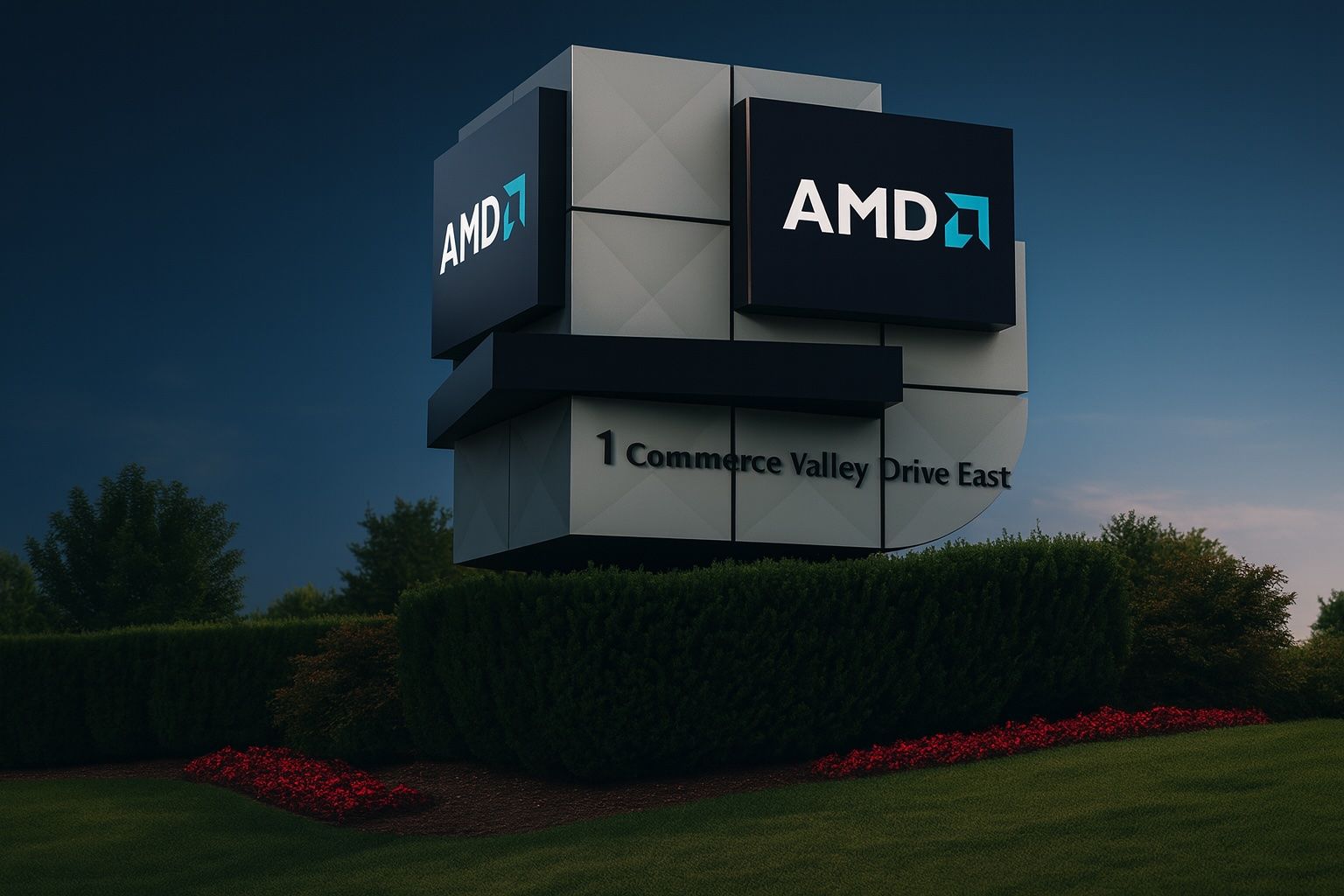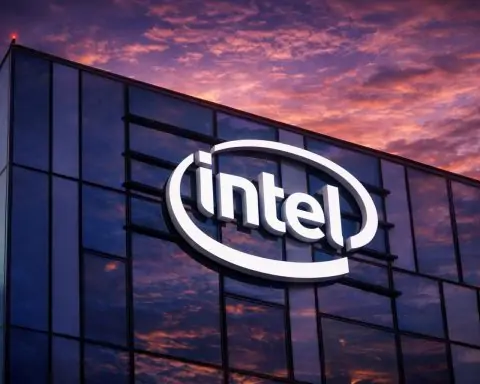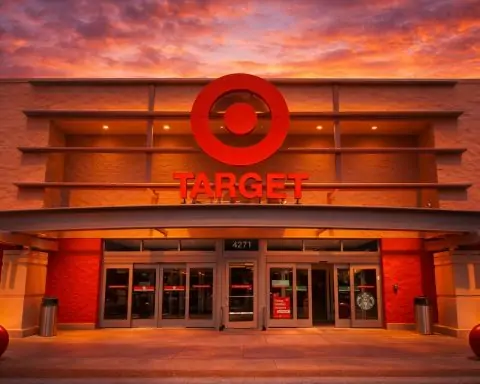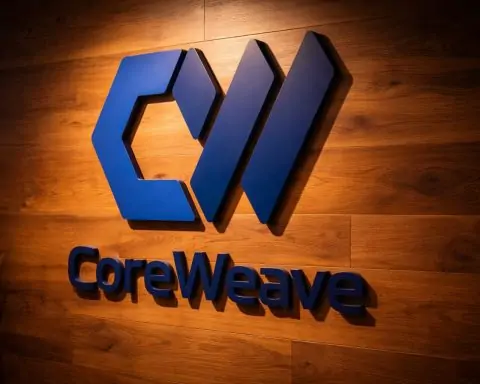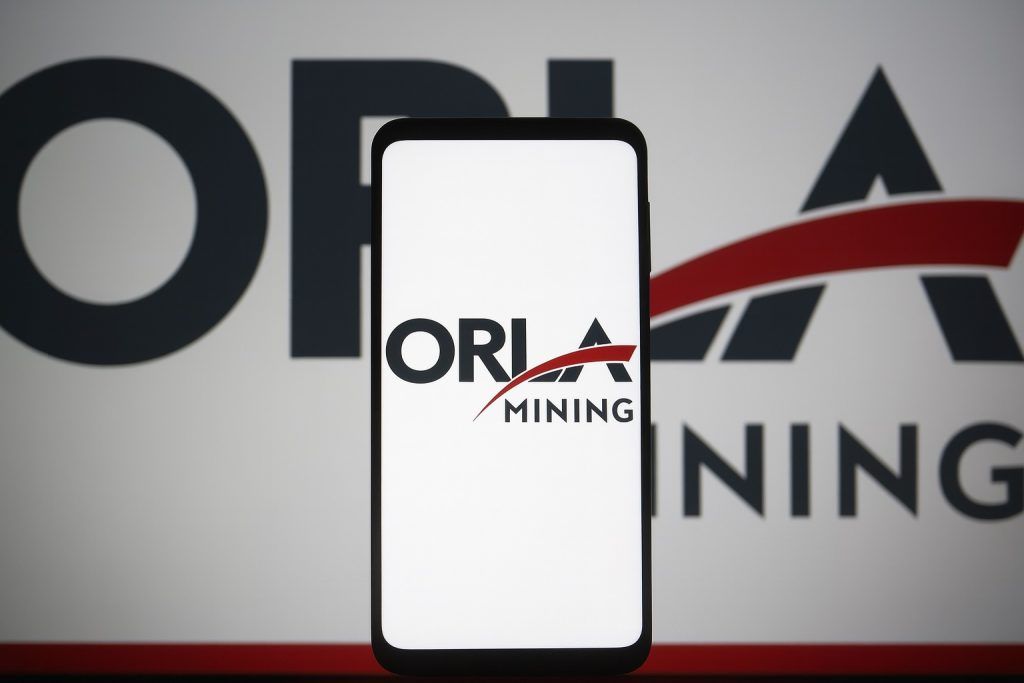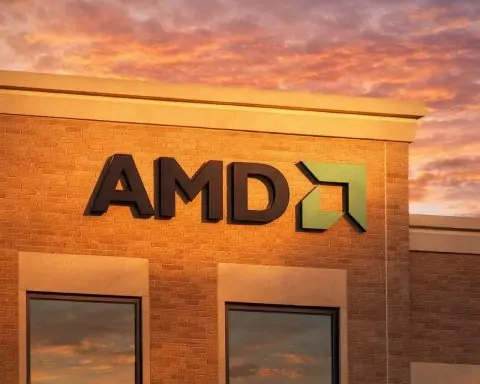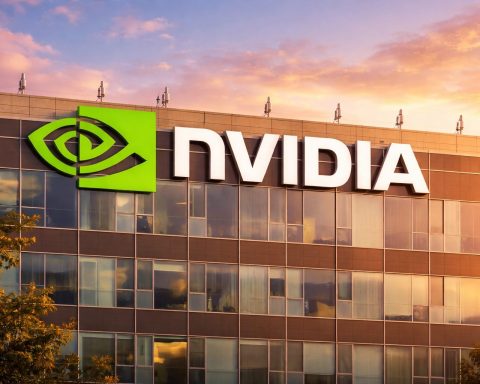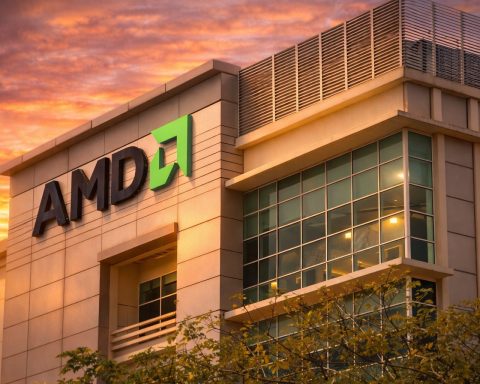- 6 Gigawatt AI Chip Partnership: OpenAI and AMD announced a multi-year deal for OpenAI to deploy six gigawatts of AMD GPUs across several generations, starting with 1 GW of Instinct MI450 chips in late 2026 [1] [2]. This equates to hundreds of thousands of AI chips powering OpenAI’s next-gen AI infrastructure [3]. AMD will be a “core strategic compute partner” for OpenAI under this agreement [4].
- OpenAI’s Option for ~10% of AMD: As part of the deal, AMD issued OpenAI a warrant to buy up to 160 million AMD shares at $0.01 each, roughly a 10% stake if fully vested [5] [6]. The shares vest in tranches when milestones are met – the first after the initial 1 GW deployment, and later tranches as OpenAI scales to 6 GW and AMD’s stock hits price targets up to $600 [7] [8]. This unique equity sweetener aligns OpenAI’s incentives with AMD’s success.
- “Tens of Billions” in Revenue for AMD: AMD expects the OpenAI deal to generate tens of billions of dollars in annual revenue, with ripple effects potentially exceeding $100 billion over four years as other customers follow OpenAI’s lead [9] [10]. AMD’s CFO Jean Hu said the partnership will be “highly accretive” to earnings and deliver massive shareholder value [11]. For context, AMD’s total revenue for 2025 was around $33 billion, versus Nvidia’s $206 billion [12], highlighting how transformative this deal could be.
- AMD Stock Soars, Nvidia Dips: News of the OpenAI alliance sent AMD’s stock price rocketing 30–34% – its biggest one-day gain in 9 years – adding about $80 billion in market value [13] [14]. In pre-market trading, AMD jumped ~23–27% to ~$210 a share [15]. Nvidia’s stock fell ~2% on the news [16] [17] as investors saw the deal as a “major vote of confidence” in AMD’s AI chips [18] and a sign Nvidia’s grip on the AI market could loosen.
- Validating AMD, Challenging Nvidia: Industry experts call the deal “transformative…for the dynamics of the industry”, showcasing AMD as a credible alternative to Nvidia [19]. “We view this deal as certainly transformative,” said AMD EVP Forrest Norrod [20]. Analysts say it validates AMD’s AI technology after trailing Nvidia, even if Nvidia still dominates and sells every chip it makes [21] [22]. “This gives [AMD] a major platform to monetize the AI revolution,” noted Wedbush analysts, erasing any lingering doubts about AMD’s AI roadmap [23].
- OpenAI’s Compute Arms Race: OpenAI’s CEO Sam Altman has warned the biggest constraint on growth is access to compute power [24]. In 2025, OpenAI launched a $500 billion “Stargate” initiative to build massive AI supercomputers, planning 1 GW of capacity by 2026 and far more thereafter [25] [26]. The AMD deal is part of a string of huge partnerships OpenAI is striking to secure silicon: last month Nvidia agreed to invest $100 billion in OpenAI and supply at least 10 GW of its GPUs (including its next-gen “Vera Rubin” chips) to OpenAI’s data centers [27] [28]. OpenAI is also co-developing custom AI chips with Broadcom [29] and buying $300 billion in cloud capacity from Oracle over ~5 years [30]. It even inked deals with Samsung and SK Hynix to secure advanced memory (HBM) and build data centers in South Korea as part of Stargate [31] [32]. This multi-supplier strategy is intended to ensure OpenAI isn’t bottlenecked by any single vendor or supply chain issue [33] [34].
- Who Pays the Bill? The OpenAI–AMD pact underscores the voracious capital demands of cutting-edge AI. OpenAI, now valued around $500 billion, generated ~$4.3 billion revenue in H1 2025 but burned $2.5 billion in cash in that period [35] [36]. Funding this 6 GW build-out (and other deals) will require enormous investment. Reuters reports OpenAI may need to raise tens of billions of dollars more [37]. Observers say OpenAI’s recent deals with Broadcom, Oracle, and now AMD will likely compel major financing moves – possibly new equity, debt, or restructuring – as the startup transforms into more of an infrastructure company [38] [39].
- Strategic Motives for Both Sides: For OpenAI, the AMD alliance helps diversify its compute sources and secure massive capacity for future AI models, reducing reliance on Nvidia and Microsoft’s Azure cloud [40]. Altman called it “a major step in building the compute capacity needed to realize AI’s full potential,” saying AMD’s high-performance chips will help OpenAI “bring the benefits of advanced AI to everyone faster” [41] [42]. For AMD, winning OpenAI’s business is a huge validation of its Instinct accelerator chips and ROCm software, potentially attracting other AI customers who follow OpenAI’s lead [43] [44]. “Other people are going to come along…[OpenAI] has a lot of influence over the broader ecosystem,” noted AMD’s strategy chief Mat Hein [45]. The partnership also aligns AMD with a top AI player and positions it firmly in the AI race that has so far been dominated by Nvidia.
- Broader Impact on Tech and Markets: The announcement sparked a rally in AI-related stocks globally. Suppliers of AI hardware jumped as investors bet on surging demand – e.g. Super Micro Computer (servers), TSMC (chip fabrication), and memory makers Samsung and SK Hynix all saw shares leap to multi-year highs [46] [47]. Samsung and Hynix climbed 4.7% and 12% respectively after partnering with OpenAI, as the deal assuaged fears of oversupply and confirmed huge upcoming orders for high-bandwidth memory chips [48] [49]. However, the scale of OpenAI’s plans is also drawing attention to supply-chain bottlenecks (HBM shortages, chip packaging limits) and the energy footprint of AI – a 6 GW data center cluster would consume as much power as ~5 million US homes or six nuclear reactors [50] [51], raising sustainability questions.
The 6-Gigawatt AI Chip Deal: Inside the AMD–OpenAI Alliance
On October 6, 2025, OpenAI and AMD unveiled a blockbuster agreement that instantly reshaped the AI hardware landscape. OpenAI committed to purchase 6 gigawatts of AMD’s AI accelerators over multiple chip generations [52] [53]. For perspective, six gigawatts of computing is roughly the output of three Hoover Dams or the electricity used by 5 million U.S. households [54]. It reflects the sheer scale of compute that OpenAI believes it will need for training future models and serving users.
Under the deal, AMD will begin supplying its forthcoming Instinct MI450 GPUs to OpenAI’s data centers starting in the second half of 2026, with an initial 1 GW deployment [55] [56]. The partnership is multi-year and multi-generation, meaning OpenAI plans to adopt not just the MI450 but also successive AMD GPU series (like MI460, MI500, etc.) as they emerge [57] [58]. In fact, AMD noted the companies are sharing engineering insights to co-design future chips and systems to meet OpenAI’s needs [59] [60] – mirroring the close hardware-software co-development that Nvidia has traditionally done with big cloud clients [61].
Crucially, the agreement goes beyond a standard chip purchase. To “align strategic interests,” AMD granted OpenAI an equity incentive in the form of a stock warrant [62]. This gives OpenAI the right to buy up to 160 million AMD shares at $0.01 each, potentially a 9–10% ownership stake in AMD [63] [64]. OpenAI can only exercise these shares if it meets certain milestones that benefit both sides. The first tranche vests when OpenAI’s first 1 GW of AMD GPUs is up and running (expected in 2026), and further tranches vest as OpenAI’s AMD purchases scale to the full 6 GW target [65] [66]. Additionally, some tranches are tied to AMD’s stock reaching specific price targets – culminating in AMD hitting $600 per share for the final batch [67]. This means OpenAI’s ability to claim the entire 10% stake depends on AMD’s market success and OpenAI’s deployment success. Essentially, OpenAI will earn a larger stake only if the partnership truly pays off with huge growth in AMD’s value and the realization of the 6 GW deployment [68].
Both companies hailed the deal as a “win-win”. AMD CEO Dr. Lisa Su said the collaboration brings together “the best of AMD and OpenAI” to enable “the world’s most ambitious AI buildout,” calling it a “true win-win” that will “push the boundaries of artificial intelligence” [69] [70]. OpenAI CEO Sam Altman likewise praised AMD’s “leadership in high-performance chips” and said working with AMD will help OpenAI “accelerate progress” toward its mission of benefiting humanity with AI [71]. In short, OpenAI gets guaranteed access to a massive pool of cutting-edge GPUs (and even influence over their design), while AMD secures a marquee customer and a share in OpenAI’s future success.
Financially, the stakes are enormous. Although the exact dollar value of the deal was not disclosed, AMD executives project “tens of billions of dollars” of annual revenue from this contract [72]. They further estimated the total impact could exceed $100 billion over four years when including business from “OpenAI and other customers” drawn by this partnership [73]. For AMD – a company expecting about $33 billion in revenue in 2025 – adding tens of billions per year would be transformative [74]. “Our partnership with OpenAI is expected to deliver tens of billions of dollars in revenue for AMD while accelerating OpenAI’s infrastructure buildout,” AMD CFO Jean Hu confirmed, calling the agreement “highly accretive” to earnings [75]. In AMD’s view, this single deal not only brings in direct sales but also enhances its credibility, potentially attracting other AI companies who previously might have defaulted to Nvidia. AMD’s head of strategy Mat Hein noted that because OpenAI is a trendsetter in AI, “other people are going to come along… OpenAI has a lot of influence over the broader ecosystem” [76], suggesting this win will snowball into broader adoption of AMD chips [77].
For OpenAI, the pact secures a second major source of critical AI processors during a period of global chip shortages and exploding demand. It’s a strategic hedge; OpenAI is effectively hedging its bets on AI hardware by not putting all its eggs in Nvidia’s basket [78]. Altman described the AMD deal as “a major step in building the compute capacity needed” for advanced AI [79]. Indeed, by committing to such a vast quantity of GPUs, OpenAI is ensuring it can scale up services like ChatGPT and develop more powerful models (like the rumored GPT-5) without being bottlenecked by supplier constraints. As OpenAI’s President Greg Brockman put it, “building the future of AI requires deep collaboration at every layer of the stack”, and working with AMD will help OpenAI “scale to deliver AI tools that benefit people everywhere” [80]. In practice, OpenAI will now work closely with both AMD and Nvidia in parallel, plus its own custom silicon efforts – an unprecedented multi-front strategy to secure as much computing power as possible.
Why OpenAI Needed More Silicon: The AI Compute Crunch
To understand why OpenAI is buying 6 gigawatts of GPUs, it’s important to grasp how dramatically its compute needs are growing. OpenAI’s core mission is to develop increasingly advanced AI models – ultimately aiming for artificial general intelligence (AGI). Training cutting-edge models like GPT-4 (and future GPT-5 or beyond) demands massive parallel computing power and energy. Running these models for millions of users (e.g. via ChatGPT) likewise requires a huge server footprint. Sam Altman has openly said that access to computing power is the biggest constraint on OpenAI’s progress [81]. In March 2025, he unveiled “Stargate,” a bold plan to construct world-class AI supercomputers. Stargate is described as a $500 billion private-sector initiative (supported by the U.S. government) to build AI infrastructure on an unprecedented scale [82]. The first phase aims for a 1 GW datacenter in the U.S. by late 2026 [83], but OpenAI’s ambitions extend far beyond that – Altman has floated targets of reaching 250 GW of compute by 2033 [84].
In pursuit of that goal, OpenAI in 2025 began striking multiple big hardware deals. It already relies heavily on Nvidia GPUs (like the A100 and H100) via cloud providers such as Microsoft Azure. But Nvidia’s dominance in AI chips comes with downsides: supply shortages (everyone wants Nvidia GPUs, and production has been struggling to keep up) and high costs. Nvidia’s position is so strong – over 90% share of the AI accelerator market – that it effectively dictates prices and availability [85]. Furthermore, U.S. export controls on advanced chips (aimed at China) have created an environment where having only one vendor could be risky if geopolitics shift [86]. Diversification became the name of the game for OpenAI.
Leading up to the AMD alliance, OpenAI had already expanded its roster of partners:
- In September 2025, Nvidia itself agreed to deepen its relationship with OpenAI in a somewhat surprising way. Nvidia announced it will invest $100 billion into OpenAI and supply at least 10 GW of its systems to OpenAI [87]. This deal, revealed just a week before AMD’s, includes OpenAI deploying 1 GW of Nvidia’s next-gen “Vera Rubin” GPUs in 2026 [88]. In Nvidia’s case, the flow of capital is inverted – Nvidia is taking an equity stake or making a huge investment in OpenAI, rather than OpenAI investing in Nvidia [89]. The two deals underscore how critical OpenAI’s business is seen by chipmakers: Nvidia paid to secure OpenAI’s continued reliance, while AMD offered stock to lure OpenAI’s business. OpenAI gains from both by essentially playing two giants off each other.
- OpenAI is also working on custom AI chips with Broadcom. Reuters reported in 2024 that OpenAI had partnered with Broadcom to design bespoke silicon tailored to its workloads [90]. Such custom chips could reduce dependency on off-the-shelf GPUs and potentially improve efficiency [91]. Broadcom, better known for networking and ASICs, is now emerging as a key player in AI accelerators through this collaboration.
- In the cloud arena, OpenAI stunned observers by signing one of the largest cloud computing contracts in history with Oracle. According to media reports, in September 2025 OpenAI agreed to purchase $300 billion of cloud capacity from Oracle over ~five years [92]. Oracle, a minority investor in OpenAI, will build at least 4.5 GW of new data center capacity for OpenAI as part of this deal [93]. This is on top of OpenAI’s existing use of Microsoft’s Azure cloud (Microsoft has invested heavily in OpenAI and provides cloud credits). The Oracle partnership shows OpenAI’s eagerness to get any and all capacity it can – spreading its computing across multiple cloud vendors.
- To secure the memory and components that feed all those chips, OpenAI turned directly to the world’s top memory chipmakers. In early October 2025, OpenAI announced partnerships with Samsung Electronics and SK Hynix of South Korea [94] [95]. The two will supply advanced high-bandwidth memory (HBM) and other DRAM for OpenAI’s supercomputers, and notably will also collaborate on building two data centers in South Korea (an “AI hub” in Asia) as part of OpenAI’s global expansion [96]. The news sent Samsung stock to a 4-year high and SK Hynix to a record high, as analysts predicted OpenAI’s project will soak up enormous HBM volumes, alleviating concerns of oversupply in the memory market [97] [98]. One analyst noted that worries about HBM price declines “will be easily resolved by the strategic partnership”, given the surge in demand OpenAI represents [99].
- OpenAI’s hardware push also involves sovereign governments. The U.S. government’s involvement via the Stargate project (promoted by President Donald Trump in this timeline) indicates political support for expanding AI infrastructure domestically [100]. The partnership with Korean firms even factored into U.S.–South Korea trade discussions, highlighting how strategic AI supply has become [101] [102]. Additionally, OpenAI has floated an “OpenAI for Countries” program to help nations build their own AI infrastructure, implying OpenAI might assist in deploying compute power across friendly nations [103].
In summary, OpenAI is engaged in an unprecedented compute land grab, forging alliances across the tech ecosystem. By securing silicon from multiple sources – Nvidia, AMD, Broadcom (custom), and cloud providers – OpenAI is building a multi-supplier “compute moat.” In other words, access to huge computing capacity is becoming one of OpenAI’s chief competitive advantages, or moat, against any would-be rivals [104]. This marks a shift in how AI companies operate: OpenAI is behaving less like a typical software startup and more like a hyper-scale cloud operator or critical infrastructure provider, willing to spend vast sums and even redesign its corporate structure to obtain the needed hardware [105] [106].
However, all this capacity comes at a staggering cost. Analysts estimate just building a single 1 GW data center can cost billions of dollars when you factor in the land, construction, power equipment, cooling, and thousands of high-end chips [107]. OpenAI is talking about building many such facilities around the world. Its flurry of deals (Oracle, Broadcom, AMD, etc.) signals that huge fundraising will be required. Indeed, OpenAI is in the process of restructuring into a new for-profit entity to attract capital more easily [108] [109]. Investors like Microsoft, SoftBank, or others may end up injecting tens of billions, or OpenAI could seek debt financing. The AMD deal itself cleverly helps finance OpenAI’s growth: by giving OpenAI potentially valuable stock, AMD is indirectly subsidizing OpenAI’s compute expansion (OpenAI won’t have to pay cash for that portion of the deal if the stock warrants vest) [110] [111]. This kind of “financial engineering”, blending equity with procurement, is becoming more common in AI mega-deals [112] [113]. (Nvidia has done part-stock, part-cash deals for some sovereign AI projects as well, effectively investing in customers to lock in orders [114].)
AMD’s Breakthrough Moment – and Nvidia’s Response
For AMD, landing OpenAI as a customer is a major breakthrough in the AI chip arena. Nvidia has long been the undisputed leader in AI accelerators, while AMD was often seen as an also-ran in this segment – competitive on paper but with relatively small market share. In 2022–2023, AMD launched its Instinct MI200 and MI300 series GPUs, which technically offered lots of memory and decent performance, but software support was a hurdle. Nvidia’s proprietary CUDA software ecosystem kept many AI developers locked in to Nvidia hardware. AMD has been countering this by pushing ROCm, its open-source GPU computing software, and emphasizing an open ecosystem to attract AI researchers. Over the last couple of years, AMD also stepped up its silicon design: its current flagship MI300X GPU and planned MI350/MI450 are aimed squarely at the datacenter AI workloads that Nvidia’s A100, H100 and upcoming chips target [115] [116].
OpenAI’s vote of confidence suggests AMD’s efforts are paying off. Winning a contract from OpenAI signals that AMD’s technology is now considered viable for the most demanding AI tasks [117] [118]. This is not only about hardware specs but also about partnership and support – OpenAI and AMD have already been collaborating (OpenAI provided input on the MI300X design in the past [119]), and now they’ll be co-engineering future generations. It’s a strong validation of AMD’s roadmap. “AMD has really trailed Nvidia for quite some time. So I think it helps validate their technology,” said Leah Bennett, an investment strategist, regarding the OpenAI deal [120].
Still, Nvidia is far from dethroned. It currently controls 90%+ of the AI chip market and has a massive lead in both hardware and software adoption [121]. Importantly, the OpenAI–AMD deal does not replace OpenAI’s existing usage of Nvidia – it augments it. OpenAI confirmed via a source that this AMD partnership “does not change” its ongoing plans with Nvidia or Microsoft [122]. In other words, OpenAI will take all the Nvidia GPUs it can get and all the AMD GPUs it can get. The AI market is growing so fast that OpenAI can easily utilize both suppliers (indeed, Nvidia’s September deal for 10 GW is even larger in scale). In the near term, analysts believe Nvidia’s dominance and order book are secure – the company has said it is selling every H100 it can produce, and customers are still facing wait times and supply shortages for Nvidia hardware [123] [124]. So even after hearing of AMD’s win, Wall Street consensus is that Nvidia’s sales won’t suffer immediately. “Unlikely to dent Nvidia’s dominance,” was one view – Nvidia will continue to ride the AI wave, at least for now [125].
However, longer term, the AMD–OpenAI alliance does introduce real competition into a space Nvidia has owned. OpenAI’s endorsement could encourage other AI startups or cloud providers to consider AMD Instinct GPUs, especially if OpenAI helps improve the software ecosystem for them. Moreover, the symbolic impact is significant: it signals that Nvidia is no longer the only game in town for top-tier AI deployments. This competitive pressure may push Nvidia to innovate even faster or adjust pricing. There’s also a strategic angle: by taking a stake in AMD, OpenAI gains a bit of influence (or at least insight) into one of Nvidia’s chief rivals. As one market analyst, Dan Coatsworth, noted, owning part of AMD could give OpenAI “the power to potentially influence [AMD’s] corporate strategy. With Nvidia, OpenAI is simply the client and not a part-owner.” [126] [127]. OpenAI having skin in the game with AMD might incentivize it to optimize its software for AMD GPUs and ensure the partnership succeeds – something that could gradually erode Nvidia’s advantages.
From Nvidia’s perspective, it has also made moves to bind OpenAI closer: the $100 billion investment and 10 GW supply deal mentioned earlier. Nvidia CEO Jensen Huang has been aggressively pursuing what he calls “sovereign AI” initiatives – helping nations and big firms build their own AI clouds (often with favorable financing or partnerships) [128]. Nvidia has ongoing collaborations to build AI infrastructure in countries like Saudi Arabia and the UAE, and clearly views supplying OpenAI (and by extension Microsoft) as critical. The AI hardware market may not be winner-take-all, but Nvidia is working to ensure it stays far ahead.
In summary, AMD’s emergence is great news for the AI industry’s diversity. More competition means more innovation and potentially eased supply constraints. If AMD can deliver chips on par with Nvidia’s, it could help alleviate the GPU shortage that has plagued AI researchers and companies. OpenAI’s deal signals confidence that AMD will get there. As a bonus, AMD’s approach leans on open standards, which OpenAI’s Brockman highlighted – he emphasized the “importance of open standards” in AI infrastructure [129]. This contrasts with Nvidia’s closed CUDA ecosystem and could resonate with others in the community who prefer open-source tools. All told, Nvidia remains the 800-pound gorilla of AI chips, but AMD just got a significant boost that cements it as the clear No. 2 player – and perhaps the only one (for now) with a shot at meaningfully challenging Nvidia’s lead in the coming years [130] [131].
Market Reaction: Stocks Surge Across the AI Ecosystem
The stock market reacted swiftly to the AMD–OpenAI news. AMD’s stock skyrocketed on Oct 6, as investors digested the scale of the deal and its implications for AMD’s growth. Shares of AMD jumped over 30% by midday, on track for their biggest one-day percentage gain since 2016 [132]. In fact, AMD’s market capitalization swelled by about $80 billion in a single day [133] – an extraordinary move for a company of AMD’s size, reflecting how game-changing this deal is perceived to be. Year-to-date, AMD was already up nearly 50% (amid the 2025 “AI boom” in stocks), and this announcement brought its YTD gain to roughly 80% [134]. Traders on forums and Wall Street alike were stunned; such a rapid climb is more typical of a biotech on a drug approval than a mature semiconductor firm. But as one analyst put it, “Any lingering fears around AMD should now be thrown out the window” after this deal, which gives AMD a major platform in AI it previously lacked [135].
Meanwhile, Nvidia’s stock saw a modest drop – about 1–2% down on the day [136]. Some of that could be general market movement, but it appears investors did register that this partnership could mean slightly stiffer competition for Nvidia in the future. Still, Nvidia’s slight dip is trivial compared to its enormous 2025 run-up (Nvidia had been hitting record highs thanks to surging AI chip demand). In fact, one could interpret the small size of Nvidia’s decline as a sign that investors believe Nvidia’s position remains very strong despite AMD’s gain [137] [138]. As noted, Nvidia’s sales are capacity-limited (everything it makes gets sold), so losing some share at the margins to AMD in 2026+ might not materially hurt Nvidia’s near-term financials – especially since Nvidia is also supplying OpenAI in parallel. Nonetheless, the psychological impact of the #2 player’s stock spiking 30% on an AI win did raise eyebrows in the tech investing community about Nvidia’s longer-term moat.
Beyond the two rivals, the ripple effect spread widely. Companies tied to AI infrastructure all got a bump:
- Memory chip makers soared on expectations the OpenAI project will consume vast quantities of memory. In Seoul, shares of Samsung Electronics leapt 4.7% and SK Hynix jumped 12% to an all-time high following their memory supply partnership with OpenAI [139]. Together they added $37 billion in market cap in a day [140]. Investors realized that OpenAI’s 6 GW of GPUs will need an unprecedented amount of HBM and DRAM chips, likely meaning huge orders for Samsung and Hynix. This helped allay concerns that memory prices were set to slump; instead, demand looks insatiable thanks to AI [141].
- Suppliers and contract manufacturers also benefited. For instance, companies like TSMC (which will fabricate AMD’s chips) saw gains as the market inferred AMD will be ramping up chip production. Super Micro Computer, a server manufacturer that integrates GPUs into systems, rallied as well [142]. Even more tangential players – such as some Bitcoin mining firms – saw upticks on the theory that more AI hardware could spill over into broader high-performance computing demand [143].
- Oracle’s stock (and other cloud providers) may have gotten a boost because OpenAI’s expansion implies massive cloud spending. Oracle in particular has a big $300B cloud deal with OpenAI, so anything that reinforces OpenAI’s growth plans (like securing AMD chips) is positive for Oracle’s future revenue from OpenAI.
- Broader tech indices: The news helped drive the Nasdaq and S&P 500 higher that day, counteracting some macro concerns. In early trading after the announcement, the Nasdaq rose as AMD’s surge alone contributed significantly to index gains [144]. It’s not often that a single stock’s movement can sway a major index, but a 30% pop in a large-cap like AMD will do it.
It wasn’t all cheers, though. AMD’s warrant structure (giving OpenAI up to 10% equity) sparked a “speculative frenzy” around what AMD’s future stock price could be [145]. If AMD were to indeed hit the $600 share price needed for OpenAI’s final warrant tranche, it would imply AMD’s market cap multiplying several times over current levels. Some traders started treating that as a quasi-price target, driving heavy options trading. There’s also the fact that if fully exercised, those 160 million shares for OpenAI would dilute existing AMD shareholders (about a ~10% dilution). However, investors seemed unfazed by dilution given the growth story – the attitude was that if OpenAI earns those shares, it means AMD’s business has exploded in size, which is a net win for everyone. AMD’s stock momentum suggests the market strongly believes in the upside scenario.
Opportunities and Challenges Ahead
The OpenAI–AMD partnership opens exciting possibilities but also faces significant challenges and risks as it unfolds. Both companies – and the broader industry – will have to navigate these in the coming years:
+ Opportunities: For OpenAI, securing multi-vendor supply means it can continue to scale AI models aggressively. Compute capacity becomes a competitive moat – with 6 GW of AMD GPUs (plus Nvidia’s and others), OpenAI will have unmatched resources to train AI, serve users, and even offer AI cloud services to others [146]. This could entrench OpenAI’s leadership in AI if utilized well. It also gives OpenAI leverage in pricing and negotiating; having AMD in the mix may pressure Nvidia to offer better terms or priority supply to keep OpenAI’s favor. For AMD, the deal provides not just huge revenue but a chance to improve its products through close collaboration with one of AI’s premier research labs. OpenAI’s feedback can help AMD optimize its GPU architectures and software for AI workloads [147]. If AMD’s forthcoming MI450/MI500 series perform well for OpenAI, that will strongly endorse AMD to other hyperscalers (like cloud providers or big AI startups), potentially snowballing into more business. In effect, AMD has a shot at eroding Nvidia’s monopoly over time, which could lead to a more balanced and innovative AI hardware ecosystem. The industry at large benefits from having a second source of high-end AI chips – it could spur faster innovation, more openness (AMD’s ROCm vs Nvidia’s closed CUDA), and resilience against supply disruptions.
Additionally, OpenAI’s push is driving investment in infrastructure (data centers, power, cooling) and component supply chains. This could lead to advancements in things like new cooling techniques (to handle power-hungry 6 GW clusters) or renewable energy projects to power these AI farms, as stakeholders respond to the massive energy needs. It’s worth noting that 6 GW is a huge electricity demand – roughly the output of six nuclear reactors [148]. There will be efforts to mitigate the environmental impact, possibly by situating data centers near renewable energy sources or improving chip efficiency.
– Challenges & Risks: The most immediate challenges are technical and supply-chain related. AMD must actually deliver these chips on schedule. Its MI450 GPUs are still in development, targeting a 2026 launch. Nvidia will also be launching next-gen GPUs (codenamed Blackwell and Vera Rubin) around that timeframe [149]. If Nvidia’s next chips significantly outperform AMD’s, OpenAI might find it hard to utilize all 6 GW of AMD hardware effectively [150]. In short, AMD still has to execute on chip performance, software, and manufacturing. On manufacturing: AMD’s chips are produced by TSMC, which has finite capacity. Ramping up 6 GW worth of GPUs is a monumental task – it could strain TSMC’s advanced fabs and packaging facilities. There’s also the HBM memory bottleneck: each MI450 will require stacks of high-bandwidth memory, an area dominated by Samsung and SK Hynix. Currently, HBM supply is limited; global HBM shortages have been a problem even for Nvidia. If supply can’t scale, it could delay OpenAI’s deployments or drive up costs [151]. AMD and OpenAI will need to coordinate closely with memory suppliers (which they are, given the partnerships) to ensure enough HBM is available.
Another risk is financial sustainability. OpenAI is committing to enormous spending – 6 GW of cutting-edge GPUs plus numerous new data centers and custom chips. The capital expenditure is mind-boggling. If AI usage or revenue doesn’t grow as fast as expected, OpenAI could overextend itself. Right now, investor appetite is strong (hence the $500 billion valuation), but if market conditions change or AI adoption slows, raising the required funds might become challenging. OpenAI is already restructuring to become more profit-driven, which carries governance complexity (balancing its nonprofit-origin ideals with for-profit investors). The company will need to carefully manage these big bets to avoid a crunch, especially given its high cash burn rate [152].
Regulation and geopolitics also loom. As OpenAI builds AI data centers globally, it must navigate export controls and local regulations. The U.S. is keen to keep the most powerful AI chips out of adversaries’ hands, so OpenAI/AMD have to ensure compliance with any export rules (for instance, if OpenAI wanted to deploy chips in certain countries, it might be restricted) [153] [154]. Security is another concern – concentrating so much AI compute raises questions about controlling access, preventing misuse, and hardening these centers against cyber threats. OpenAI’s stature means any failure or breach could have outsized repercussions.
Finally, there’s the environmental impact. The AI industry is increasingly drawing criticism for its energy usage and carbon footprint. A cluster running 6 GW continuously could consume on the order of 50 terawatt-hours per year (depending on utilization) – as much as some small countries. Without mitigation, that could indeed “worsen climate change,” as critics warn [155]. OpenAI and AMD will face pressure to improve energy efficiency (perhaps via better chip design, liquid cooling, etc.) and to source renewable energy for these operations. This is a risk not in immediate business terms but in public perception and regulatory scrutiny – large AI compute projects might attract carbon taxes or sustainability mandates in the future.
Conclusion: A New Era for AI Hardware
The sweeping partnership between OpenAI and AMD is more than just a supply contract; it’s a strategic alignment that could reshape the AI hardware landscape [156]. By securing six gigawatts of AMD GPUs – and even a stake in AMD’s success – OpenAI is hedging against over-reliance on Nvidia while guaranteeing itself the raw compute needed for ever-larger AI models [157]. The deal sends a signal that AMD has arrived as a formidable competitor in AI chips, giving the industry a second source of high-end silicon at scale.
This is a pivotal moment in the AI chip race. For years, Nvidia has been the singular powerhouse, but now the combination of mammoth AI demand and OpenAI’s influence is propelling a more diversified ecosystem. We are likely to see further alliances and mega-deals in the coming months: cloud providers linking up with chipmakers, AI firms teaming with component suppliers, and even nation-scale projects to build “sovereign” AI infrastructure. The lines between software companies and hardware procurement are blurring – OpenAI itself is now deeply involved in chip strategy, and chip companies are investing in AI labs. It’s a merging of worlds driven by the realization that compute capacity is as critical a resource as data or talent in the AI era [158].
In the end, OpenAI’s multi-billion dollar bet on AMD underscores an evolving truth: the future of AI will not be dictated by any single company or technology, but by a web of strategic partnerships leveraging each other’s strengths. As OpenAI and AMD embark on this multi-year journey, the entire tech sector will be watching. If successful, their alliance will pave the way for more open competition in AI hardware and ensure that no single bottleneck can hold back the next breakthroughs in artificial intelligence [159] [160].
Sources: OpenAI/AMD press release [161] [162]; Reuters [163] [164]; The Guardian [165] [166]; Investors Business Daily [167]; TS2 Tech (Tech Space 2.0) [168] [169]; Investopedia [170]; Reuters (Samsung/Hynix deal) [171]; and others.
References
1. ir.amd.com, 2. www.reuters.com, 3. www.reuters.com, 4. ir.amd.com, 5. ir.amd.com, 6. www.reuters.com, 7. ir.amd.com, 8. ts2.tech, 9. ts2.tech, 10. www.reuters.com, 11. ir.amd.com, 12. www.reuters.com, 13. www.reuters.com, 14. www.theguardian.com, 15. medium.com, 16. ts2.tech, 17. www.investopedia.com, 18. www.theguardian.com, 19. www.theguardian.com, 20. www.theguardian.com, 21. www.reuters.com, 22. www.reuters.com, 23. www.investopedia.com, 24. www.theguardian.com, 25. ts2.tech, 26. www.reuters.com, 27. www.reuters.com, 28. www.reuters.com, 29. ts2.tech, 30. www.reuters.com, 31. www.reuters.com, 32. www.reuters.com, 33. ts2.tech, 34. ts2.tech, 35. www.reuters.com, 36. www.theguardian.com, 37. ts2.tech, 38. ts2.tech, 39. ts2.tech, 40. ts2.tech, 41. ir.amd.com, 42. ir.amd.com, 43. ts2.tech, 44. www.theguardian.com, 45. www.theguardian.com, 46. ts2.tech, 47. www.reuters.com, 48. www.reuters.com, 49. www.reuters.com, 50. www.reuters.com, 51. ts2.tech, 52. ir.amd.com, 53. www.reuters.com, 54. www.reuters.com, 55. ir.amd.com, 56. www.reuters.com, 57. ir.amd.com, 58. ts2.tech, 59. ir.amd.com, 60. ts2.tech, 61. ts2.tech, 62. ir.amd.com, 63. ir.amd.com, 64. ts2.tech, 65. ir.amd.com, 66. www.reuters.com, 67. ts2.tech, 68. ts2.tech, 69. ir.amd.com, 70. ts2.tech, 71. ir.amd.com, 72. www.reuters.com, 73. www.reuters.com, 74. www.reuters.com, 75. ir.amd.com, 76. www.theguardian.com, 77. ts2.tech, 78. ts2.tech, 79. ir.amd.com, 80. ir.amd.com, 81. www.theguardian.com, 82. www.reuters.com, 83. ts2.tech, 84. www.reuters.com, 85. ts2.tech, 86. ts2.tech, 87. www.reuters.com, 88. www.reuters.com, 89. www.reuters.com, 90. www.reuters.com, 91. ts2.tech, 92. www.reuters.com, 93. www.reuters.com, 94. www.reuters.com, 95. www.reuters.com, 96. www.reuters.com, 97. www.reuters.com, 98. www.reuters.com, 99. www.reuters.com, 100. www.reuters.com, 101. www.reuters.com, 102. www.reuters.com, 103. ts2.tech, 104. ts2.tech, 105. ts2.tech, 106. ts2.tech, 107. ts2.tech, 108. www.reuters.com, 109. ts2.tech, 110. ts2.tech, 111. ts2.tech, 112. ts2.tech, 113. ts2.tech, 114. ts2.tech, 115. ts2.tech, 116. ts2.tech, 117. ts2.tech, 118. ts2.tech, 119. www.reuters.com, 120. www.reuters.com, 121. ts2.tech, 122. ts2.tech, 123. www.reuters.com, 124. www.reuters.com, 125. www.reuters.com, 126. www.reuters.com, 127. www.reuters.com, 128. ts2.tech, 129. ts2.tech, 130. ts2.tech, 131. ts2.tech, 132. www.reuters.com, 133. www.theguardian.com, 134. www.investopedia.com, 135. www.investopedia.com, 136. ts2.tech, 137. www.reuters.com, 138. www.reuters.com, 139. www.reuters.com, 140. www.reuters.com, 141. www.reuters.com, 142. ts2.tech, 143. ts2.tech, 144. ca.finance.yahoo.com, 145. ts2.tech, 146. ts2.tech, 147. ts2.tech, 148. ts2.tech, 149. ts2.tech, 150. ts2.tech, 151. ts2.tech, 152. www.theguardian.com, 153. ts2.tech, 154. ts2.tech, 155. ts2.tech, 156. ts2.tech, 157. ts2.tech, 158. ts2.tech, 159. www.theguardian.com, 160. ts2.tech, 161. ir.amd.com, 162. ir.amd.com, 163. www.reuters.com, 164. www.reuters.com, 165. www.theguardian.com, 166. www.theguardian.com, 167. ts2.tech, 168. ts2.tech, 169. ts2.tech, 170. www.investopedia.com, 171. www.reuters.com
